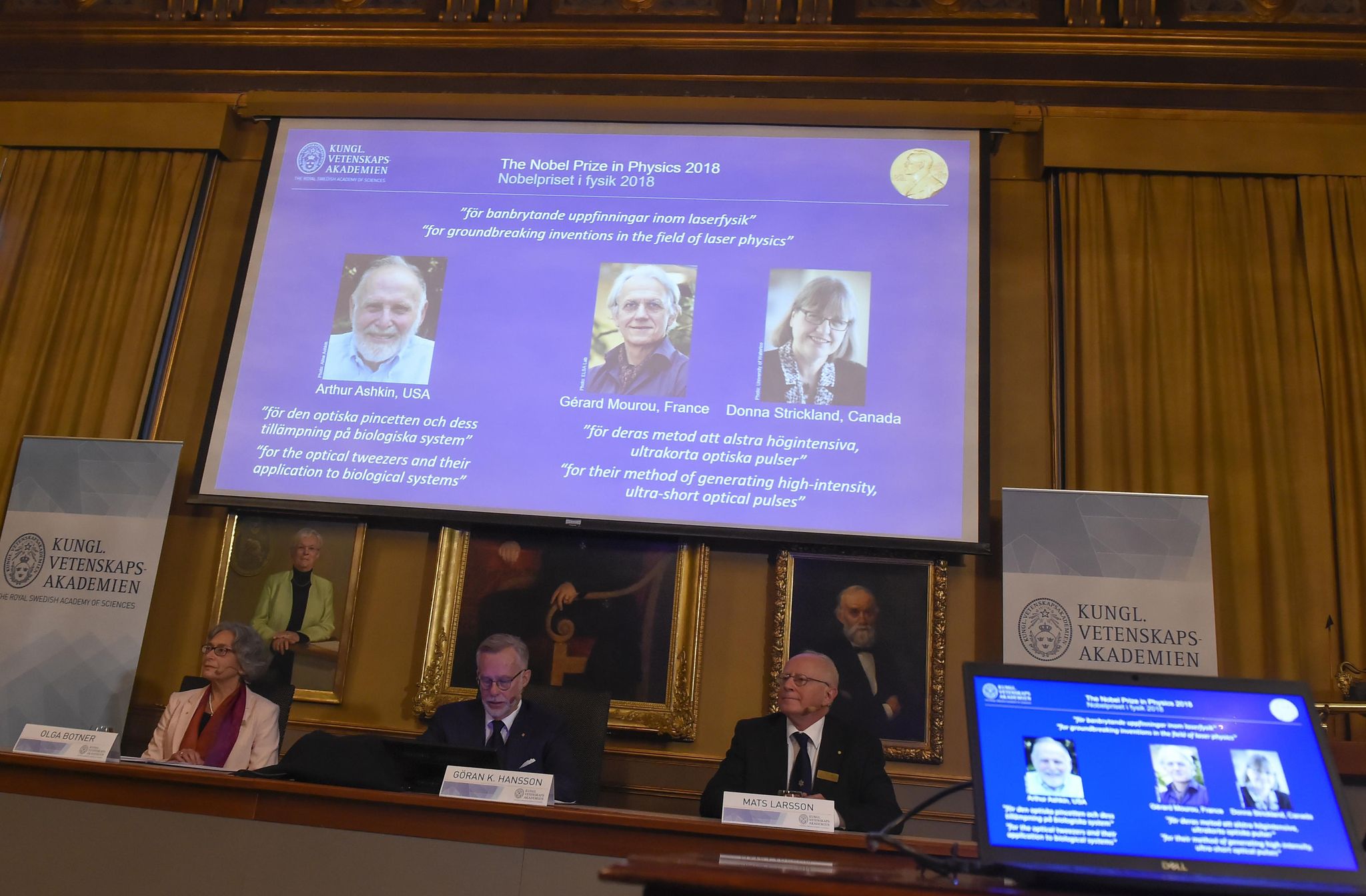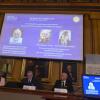
Three scientists from the United States, Canada and France won the Nobel Prize in Physics on Tuesday for work with lasers described as revolutionary and bringing science fiction into reality.
STOCKHOLM (AP) — Three scientists from the United States, Canada and France won the Nobel Prize in Physics on Tuesday for work with lasers described as revolutionary and bringing science fiction into reality.
One of them, Arthur Ashkin of Bell Laboratories in New Jersey, entered the Nobel record books by becoming the oldest laureate at age 96. Donna Strickland of the University of Waterloo in Canada is the first woman to have won a Nobel in three years and is only the third to have won for physics.
Frenchman Gerard Mourou of the Ecole Polytechnique and University of Michigan shares have the prize’s 9-million-kronor ($1.01 million) with Strickland; Ashkin gets the other half.
Sweden’s Royal Academy of Sciences, which chose the winners, said Ashkin’s development of “optical tweezers” that can grab tiny particles such as viruses without damaging them realized “an old dream of science fiction — using the radiation pressure of light to move physical objects.”
The tweezers are “extremely important for measuring small forces on individual molecules, small objects, and this has been very interesting in biology, to understand how things like muscle tissue work, what are the molecule motors behind the muscle tissue,” said David Haviland of the academy’s Nobel committee.
Strickland and Mourou helped develop short and intense laser pulses that have broad industrial and medical applications, including laser eye surgery. The academy said their 1985 article on the technique was “revolutionary.”
Strickland’s award is the first to have gone to a woman in physics since 1963, when it was won by Maria Goeppert-Mayer; the only other one was Marie Curie in 1903.
“Obviously we need to celebrate women physicists, because we’re out there. And hopefully in time it’ll start to move forward at a faster rate, maybe,” Strickland said in a phone call with the academy after the prize announcement.
Michael Moloney, CEO of the American Institute of Physics, praised all the laureates and said “It is also a personal delight to see Dr. Strickland break the 55-year hiatus since a woman has been awarded a Nobel Prize in physics, making this year’s award all the more historic.”
He credited the work of all three with “expanding what is possible at the extremes of time, space and forms of matter.”
On Monday, American James Allison and Japan’s Tasuku Honjo won the Nobel medicine prize for groundbreaking work in fighting cancer with the body’s own immune system.
The Nobel chemistry prize comes Wednesday, followed by the peace prize on Friday. The economics prize, which is not technically a Nobel, will be announced Oct. 8.
___
Heintz reported from Moscow.






